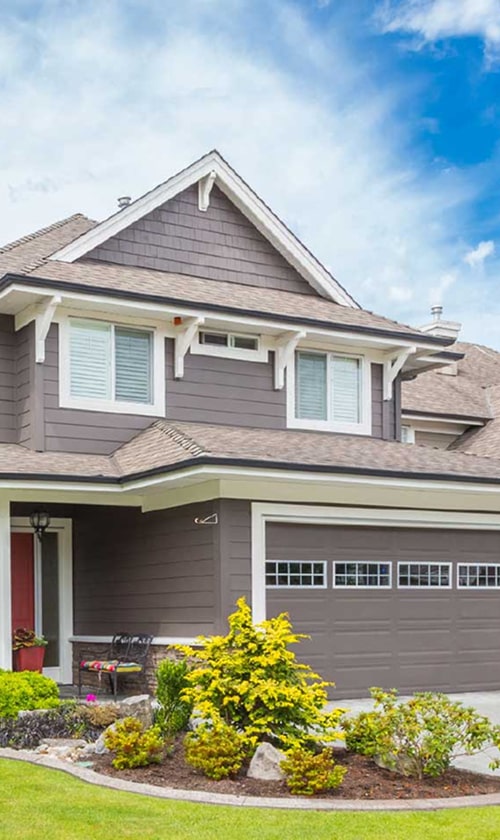Understanding Heat Pump Efficiency

When we discuss heat pump efficiency, we’re referring to the unit’s ability to convert energy into heating or cooling for our homes. A high-efficiency heat pump operates more effectively, meaning it uses less energy to provide the same level of comfort as compared to standard models.
SEER (Seasonal Energy Efficiency Ratio) and HSPF (Heating Seasonal Performance Factor) are two key performance indicators for these appliances. Energy Star-rated heat pumps have met strict energy efficiency standards set by the U.S. Environmental Protection Agency. These models are often much more efficient than the government’s minimum energy efficiency standards.
Here’s a brief overview of why we consider high-efficiency heat pumps an upgrade:
- Energy Savings: High-efficiency heat pumps have higher SEER and HSPF ratings, which result in significant energy savings over time.
- Performance: They provide consistent and effective heating and cooling, even in extreme weather, ensuring our comfort.
- Environmentally Friendly: By consuming less power, these heat pumps help us reduce our carbon footprint, making them a greener choice for heating and cooling our homes.
To determine a heat pump’s efficiency, we can look for the Energy Star label, which is only awarded to appliances that are significantly more energy efficient than minimum government standards. By choosing a unit with this label, we ensure that we are selecting a high-efficiency heat pump, optimized for energy conservation and performance.
Cost Savings and Financial Incentives
When we upgrade to a high-efficiency heat pump, we position ourselves to reap significant financial benefits. These come in the form of lower energy bills due to increased efficiency, as well as various tax credits and rebates that incentivize energy-saving investments.
Lower Energy Bills
The primary financial benefit of upgrading to a high-efficiency heat pump is the reduction in energy bills we can expect. Heat pumps that meet the ENERGY STAR standards are more efficient than their conventional counterparts, often translating into energy savings of around 20%. For us as homeowners, this means that the initial cost of installing a high-efficiency heat pump can be offset over time by continuous savings on our monthly utility bill.
- Example: If our current heating and cooling costs are $200 a month, a 20% reduction saves us $40 monthly.
Tax Credits and Rebates
In addition to lowering our energy bills, there are financial incentives available that further reduce the net cost of a heat pump upgrade. These incentives often include:
- Tax Credits: The Energy Efficient Home Improvement Credit is a federal tax credit that allows homeowners to claim a portion of the cost of qualifying energy-efficiency improvements.
- Specifics: We can claim a tax credit for 10% of the cost up to a certain limit, depending on the type of HVAC system installed.
- Rebates: Local utilities and state governments often have a rebate program for homeowners who install energy-efficient appliances. Rebates vary by location and provider but can significantly lower the upfront cost.
- Action: Checking with local providers and looking for ENERGY STAR rebates can provide us with immediate savings.
Each of these financial incentives serves as a powerful motivator for us to make the change to a more energy-efficient heating and cooling system. By strategically using these incentives, we can make our homes more comfortable and environmentally friendly while also improving our financial bottom line.
Environmental and Home Comfort Benefits

Upgrading to a high-efficiency heat pump not only reduces our environmental footprint but also enhances the comfort within our homes through improved air quality and temperature regulation.
Reduced Carbon Emissions
Our decision to replace older heating and cooling systems with a high-efficiency heat pump is a significant step towards lowering household carbon emissions. High-efficiency heat pumps utilize less energy compared to traditional HVAC systems. Due to their advanced technology, they transfer heat instead of generating it by burning fossil fuels. Consequently, this energy efficiency results in decreased demand for electricity sourced from fossil fuel-driven power plants, thus reducing the overall carbon footprint of our homes.
- Reduction in fossil fuel dependence: By minimizing reliance on fossil fuels for heat generation, we significantly curb our direct carbon emissions.
- Energy consumption: High-efficiency heat pumps can reduce energy use for heating and cooling by approximately 50%, per the U.S. Department of Energy.
Enhanced Indoor Air Quality and Comfort
The installation of a high-efficiency heat pump improves indoor air quality and creates a comfortable living environment. These systems excel in filtering out indoor airborne pollutants and maintaining consistent humidity control, essential for a healthy home. By operating on low power for longer periods, they provide better air circulation and temperature stability through the ducts. Advanced filtration options available in these units can trap smaller particles, increasing safety within our living spaces.
- Consistent Temperature: Maintains a steady indoor temperature, eliminating hot and cold spots.
- Air Quality: Reduces the concentration of dust, pollen, and other pollutants with superior filtration capabilities.
System Design and Installation Considerations

When upgrading to a high-efficiency heat pump, it’s crucial to consider both the design of the system and the quality of the installation. These will ensure optimal performance and energy savings.
Sizing and Proper Installation
Proper sizing is fundamental to the success of any HVAC system. We must ensure that the heat pump capacity matches the specific heating and cooling demands of the home. An undersized unit can lead to ineffective temperature control, while an oversized one can cause short cycling, leading to wear and tear.
- Choose a heat pump with BTU output that corresponds to the square footage and insulation quality of the home.
- Engage a certified contractor who adheres to Energy Star installation guidelines.
Ductwork and Building Envelope Upgrades
The efficiency of heat pumps is partly dictated by the quality of the ductwork and the building envelope. Efficient delivery of air and retention of temperature are paramount.
- Ductwork should be inspected and repaired by professionals to prevent air leakage.
- Enhancements such as air sealing of windows and doors, as well as adding insulation, are often necessary to improve the overall efficiency.
Energy Audits can identify weak points in the building envelope, and local Weatherization Assistance Programs may offer support for necessary upgrades.
Types of Heat Pumps for Different Climates
Different climates require different heat pump technologies to achieve maximum efficiency.
- Air Source Heat Pumps: Suitable for mild to moderate climates; can efficiently provide heating and cooling for most of the year.
- Cold Climate Heat Pumps: Designed to work in colder regions, maintaining efficiency even in low temperatures.
- Geothermal Heat Pumps: Utilize stable ground temperatures to provide heating and cooling in diverse climates, with higher installation costs but long-term savings.
- Ductless Systems: Ideal for homes without existing ductwork or for room-specific heating and cooling needs; include mini-splits for single areas and multi-splits for multiple areas.
Selecting the right type involves consulting with experienced installers to consider local climate patterns and your home’s specific needs.
Upgrading from Traditional Systems
When we upgrade from traditional heating systems, such as furnaces that run on natural gas, propane, or fuel oil, to a high-efficiency heat pump, we observe multiple benefits. Conventional systems, which might include inefficient air conditioners or older furnace models, typically utilize more electricity or other fuels for the same amount of heating or cooling.
Energy Efficiency: High-efficiency heat pumps use less electricity compared to traditional furnaces and air conditioners. This transformation translates into less energy consumption for equivalent levels of temperature control.
- Lower Fuel Costs: With less reliance on fuels like natural gas or oil, we often notice a significant reduction in fuel costs.
- Reduced Carbon Footprint: By consuming less electricity and fossil fuels, these pumps contribute to fewer greenhouse gas emissions.
Space Utilization: Unlike systems that require bulky radiators or extensive baseboard heating, heat pumps occupy less space. This allows us to optimize our living or working areas.
- Advanced Controls: These systems usually come with precise controls, enabling us to manage temperatures more effectively.
Durability: Modern heat pumps are designed to have a longer lifespan than older furnaces, which means we encounter fewer replacements and maintenance issues.
In short, by upgrading to a high-efficiency heat pump, we benefit from improvements in energy efficiency, experience lower operating costs, enjoy better space utilization, and contribute to environmental conservation. It represents a smart move for us, both economically and ecologically.




